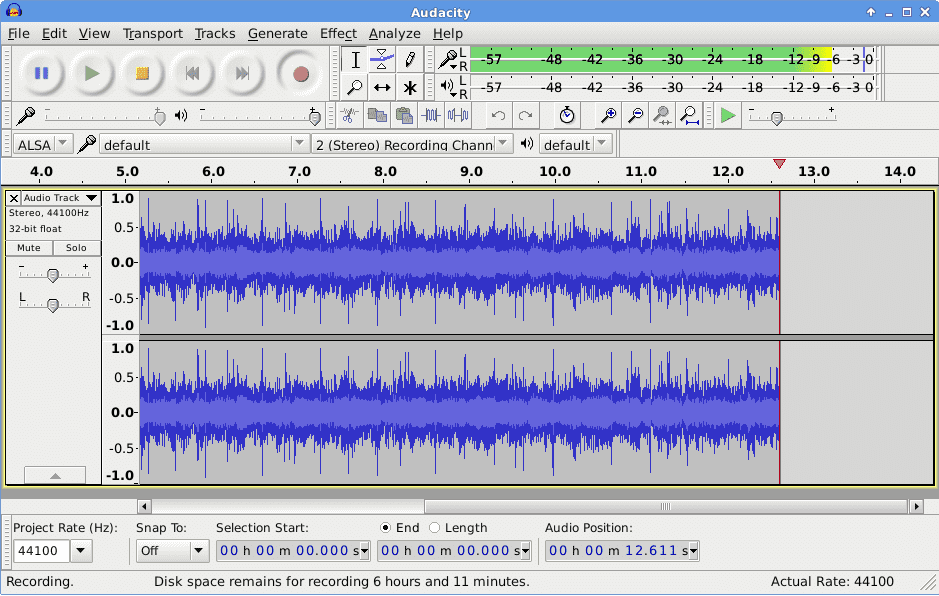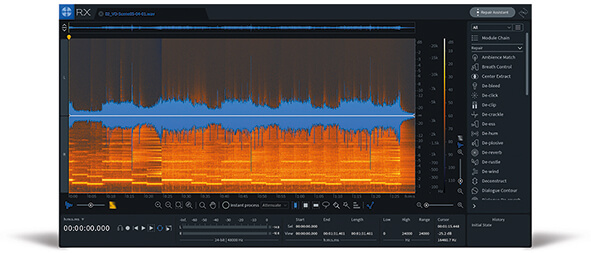Non Destructive Editing In Izotope Rx
Posted : admin On 28.12.2020Sep 12, 2014 Using Clip Gain & Leveler in RX 4 Audio Repair & Enhancement Toolkit iZotope, Inc. Consistent levels without harming transient punch using non-destructive Clip Gain. IZotope’s RX is. Sep 05, 2018 RX by iZotope has long been a top application for audio restoration and noise reduction. In addition to being a staple in post-production houses, RX’s feature set is also quite useful for music production. In this article, I’ll look at ways in which you can use it to help eliminate sonic issues on your recordings. Sep 30, 2015 iZotope RX 4 - New Features Video Tutorial - Leveler Module (2/6). Non-destructive volume changes are easily applied. We’ll walk you through using the RX. May 08, 2009 Then, is Izotope wrong by stating Logic is not capable for destructive editing? Logic does not allow destructive editing using 'Plugins'. I've wished for this for years, used to write the Emagic guys. That's why I use Cubase for audio work, has a fantastic audio editor with every editing function and available plugin ready for use with a single.

1. Improper labeling and management of noise-reduced files
This is a nasty, potentially large problem masquerading as a minor hiccup. Any time you commit an audio-restoration tool to a track, be sure to do so only on a copy of that audio. Not just a copy within the DAW, but a whole new file. Never apply this processing to the original, and likewise, save the new track with a name that clearly indicates the processing you’ve applied (as in, File_Name.Date.RX_Dclick, File_Name.Date.RX_Dclick_Dnoised, etc).
It’s quite risky to do destructive editing on the original track since it’s possible you’ll have to revert to the original file later down the line: perhaps, in context, you’ve denoised too much and need to start again; maybe, after the mix is said and done, the sound design scheme doesn’t call for noise reduction after all; maybe certain phrases do, and other phrases don’t. All cases are possible, so it behooves you to give yourself the option.
Also if the tracks are not clearly labeled, you won’t know which is which, and you’ll spend lots of time auditioning files, guessing and second guessing which file is the appropriate one for the context. No. Better to save yourself the headache later on by being more organized throughout the whole process.
Oct 03, 2018 It’s quite risky to do destructive editing on the original track since it’s possible you’ll have to revert to the original file later down the line: perhaps, in context, you’ve denoised too much and need to start again; maybe, after the mix is said and done, the sound design scheme doesn’t call for noise reduction after all; maybe.
2. Over de-noising
This is the number one issue in audio restoration, I’d wager—especially for making speech sound more natural and presentable. Read these words carefully, and live by them: do not de-noise too much.
Too many podcasts, films, and other works of art are afflicted by over-denoising. How can I say this so cavalierly? Simple: I’ve heard the artifacts. I’ve heard them in TV shows, movies, on podcasts (the worst offenders), and in music. When you start to hear them, these artifacts are impossible to ignore. They are so weird that they have earned a nickname in the business: space monkeys.
Don’t afflict your dialogue track with space monkeys!

Here’s how you avoid the process: de-noise to a place where you notice significant artifacts, and then back off the reduction slider until you don’t hear the artifacts anymore. Then you should probably even back up some more!
Tune your ears: listen to sibilance, sounds that begin with a hard R, plosives, breaths, and fricatives; whooshing noises can be observed around these normal vocal phenomena. It’s not dissimilar to the ringing of a bad MP3 encoding.
You don’t want obvious artifacts in these signal because they belie the processing. Even to the lay-listener, they subliminally communicate a feeling of inferiority—a feeling of audio under construction. Such artifacts make you sound unprofessional, in other words. Also, they can objectively sound really, really bad, and might be an obstacle toward people enjoying your work.
Feel free to listen to the noise-only output of the module as a starting point, as it will give you a good idea of what you’re taking out. However, pair monitoring the noise-only output with the method mentioned above to make sure you’re not inducing artifacts.
If you’re unsure how to go about eliminating noise issues tastefully, RX 7 gives you a handy new Repair Assistant, which, among other things, provides three processing intensities (light, medium, or aggressive). This is an excellent shortcut for tuning your ears to what needs to be done within reason.
Cambridge, MA (August 8, 2014) — iZotope, Inc. , a leading audio technology company, has announced an update to its flagship audio repair and enhancement suite, RX®. RX, an Emmy Award-winning audio repair toolkit, is used by musicians, sound engineers, and post production professionals everywhere to transform noisy, distorted, or flawed audio into pristine material.
Launching this September, the new RX 4 is designed to be the ultimate companion to a DAW or NLE with new intelligent modules, time-saving features, and deeper levels of integration with their hosts.
HIGHLIGHTED FEATURES:
- Easily adjust and balance the volume of vocals and instruments with the new non-destructive editing feature, Clip Gain.
- Reduce distracting background noise from dialogue and vocals in real time with the Dialogue Denoiser (now a standard feature with both RX 4 and RX 4 Advanced).
- Streamline the editing process with a round-trip workflow compatible with Pro Tools, Logic, and other popular hosts through the RX Connect functionality.
- For audio professionals in post production, music production, and mastering, the Advanced version of RX 4 includes additional time-saving features to reliably deliver great-sounding results:
- Automatically balance the volume of mixes with the Leveler, freeing more time for creative mix decisions.
- Ensure a consistent-sounding mix by seamlessly matching multiple recordings with varying sonic profiles via EQ Match.
Pricing
RX 4 and RX 4 Advanced are coming in September. Specific pricing details will be available at that time.
Customers who purchase RX 3 after August 7, 2014 will receive a free upgrade to RX 4 upon release.
Customers who purchase RX 3 Advanced after August 7, 2014 will receive a free upgrade to RX 4 Advanced upon release.
Special upgrade pricing to RX 4 and RX 4 Advanced will be available for all previous RX customers upon release.
Availability
Sign up for the iZotope newsletter to be among the first to hear when RX 4 and RX 4 Advanced become available. Learn more at www.izotope.com/rx4.
Izotope Rx 7 Crack
Compatibility
Non Destructive Editing In Izotope Rx 6
Both RX 4 and RX 4 Advanced can be used as a standalone audio editor or as a plug-in. Supported plug-in formats include 64-bit AAX (Pro Tools 11), RTAS/AudioSuite (Pro Tools 7.4-10), VST, VST 3, and Audio Unit.